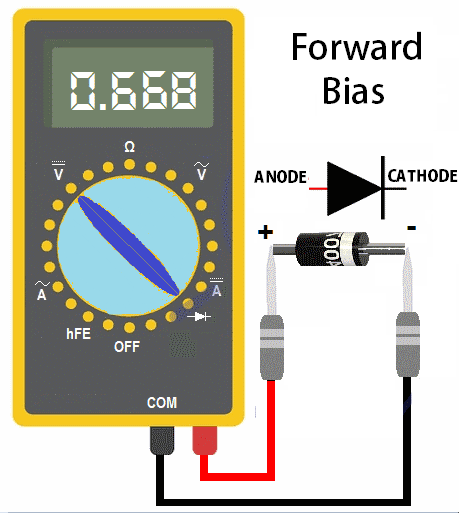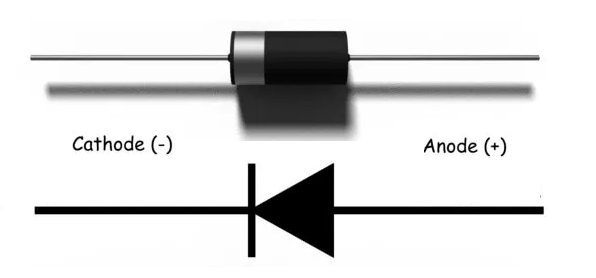A Semiconductor diode is a two-terminal electronic device which conducts current in one direction. it has almost zero resistance in one direction, and very high resistance in the other.
most commonly used semiconductor diode today, is a crystalline piece of semiconductor material with a P–N junction. To metal terminals are connected to two Semiconductor blocks. Diode is the simplest solid-state device constructed with semiconductor material like silicon, germanium, gallium arsenide, Indium gallium arsenide etc.
Depending on the use and property diodes are available in different verities like

- Simple Diode: Used in rectifier or in the circuit to provide uni-directional current.
- Light-emitting diodes (LED): Use to produce Lite. These are formed from a direct band-gap semiconductor, such as gallium arsenide, Indium gallium arsenide, charge carriers that cross the junction and emit photons when they recombine with the majority carrier on the other side.
- Photodiodes: Photodiodes are intended to sense light. These can be used in solar cells, in photometry, or in optical communications.

- VARICAP or Varactor Diodes: Used as voltage-controlled capacitors. These are used in phase-locked loop (PLL) and frequency-locked loop (FLL) circuits, VCOs.
- Schottky Diodes: Schottky diodes are constructed from metal to semiconductor contact. These have much lower junction capacitance than p–n diodes, which provides for high switching speeds and their use in high-speed circuitry and RF devices like SMPS, mixers, and detectors.
- PIN Diodes: A PIN diode has a central intrinsic layer, forming a P-type/Intrinsic/P-type structure. They are used in radio frequency applications or power electronics .
- Zener Diode: Use to proviode regulate voltage in regulated power supply. It can be made to conduct in reverse bias.
How to connect a diode in the circuit ?
If we need to connect a diode in the circuit, first we have to know Anode and Cathode terminal of the diode, Forward current ratings, and Pick Inverse Voltage (PIV) of the diode. All are available in the data sheet of the specified diode.
How to check a Diode with multimeter ?
Forward Bias Check: First place the multimeter selector switch to diode position. Connect common probe to cathode terminal of the diode and other probe to Anode terminal of the Diode.

If long beep sound heard or the display shows very low value (<1), then it is OK. go for reverse bias checking.
Reverse Bias Check: Place the multimeter selector switch to diode position. Connect common probe to Anode terminal of the diode and other probe to Cathode terminal of the Diode.

If it shows very high value or over load (OL), then the diode is OK. If it shows very low value or almost (<1), then we may conclude diode has been damaged.
The 1N4007 is a commonly used rectifier diode with a voltage rating of 1000V and a current rating of 1A. It is often used in power supply circuits to convert alternating current (AC) to direct current (DC). The diode is made up of a P-N junction, where one side is doped with a P-type material and the other side is doped with an N-type material. When a voltage is applied to the P-N junction in the forward direction, the diode conducts current, allowing current to flow from the anode (positive terminal) to the cathode (negative terminal) with a low voltage drop. However, when the voltage is applied in the reverse direction, the diode blocks current flow and only a small leakage current can flow through the diode. The 1N4007 diode is available in various package types such as axial leaded, surface mount, and through-hole mount, making it easy to use in a variety of electronic applications.

